30+ Most Popular Plants for the Midground of Planted Tanks
The midground is the heart of your aquascape — the essential bridge that connects the foreground’s subtle textures with the dramatic height of the background. Done right, it adds depth, balance, and a natural flow to the scene. More than just visual, the midground also plays a practical role: concealing the lower, often sparse stems of background plants and minimizing the need for constant maintenance.
To keep this zone tidy and thriving, opt for plants that naturally hold their shape and don’t demand frequent trimming. Slow-growing species such as Anubias, ferns, and mosses are ideal candidates. Their ability to grow on hardscape — like driftwood and rocks — not only anchors them in place but also gives your layout added structure and realism.
Here are over 30 of the most popular and reliable midground plants to enrich your planted tank, whether you’re aiming for a serene nature-style layout or a bold artistic scape.
- Anubias species
- Fern species
- Cryptocoryne species
- Alternanthera reineckii
- Alternanthera reineckii 'Mini'
- Staurogyne repens
- Red dwarf Hygrophila - Hygrophila 'Araguaia'
- Blyxa short leaf - Blyxa novoguineensis
- Chain Sword - Echinodorus quadricostatus
- Dwarf Cardinal plant - Lobelia cardinalis
- Downoi - Pogostemon helferi
- Lagenandra meeboldii
- Orchid lily - Barclaya longifolia
- River Buttercup - Ranunculus inundatus
- Pearlweed - Hemianthus micranthemoides
- Basil Leaf - Limnophila rugosa
- Rotala indica 'Bonsai'
- Water Hyssop - Bacopa caroliniana
- Creeping Jenny - Lysimachia nummularia
- Large Pearl grass - Micranthemum umbrosum
- Tonina fluviatilis
- Tonina 'Belem'
- Gratiola viscidula
- Didiplis diandra
- Proserpinaca palustris
- Water Violet - Hottonia palustris
- Nesaea pedicellata
- Nesaea crassicaulis
Anubias species
 Anubias Live Aquarium Plants #ad
Anubias Live Aquarium Plants #ad
- Type: epiphytic plant
- Position: attach to driftwood/stones in the midground
- Care level: easy
- Growth: slow
- Lighting: low
- CO2: low
Anubias species are renowned for their hardiness and versatility in aquariums. Characterized by thick, dark green leaves and a robust rhizome, they thrive in low-light conditions, making them ideal for beginners. These plants are often attached to driftwood or rocks, as their rhizomes should not be buried in substrate. Their slow growth minimizes maintenance, and they resist algae buildup, adding a natural, lush aesthetic to any tank.
Fern species
- Type: epiphytic plant
- Position: attach to driftwood/stones in the midground
- Care level: easy
- Growth: slow
- Lighting: low
- CO2: low
Aquatic ferns, such as Java Fern, feature delicate, feathery fronds that create a soft, forest-like ambiance. They are low-maintenance, tolerating a wide range of water parameters and low to moderate lighting. Ferns attach to surfaces via rhizomes, similar to Anubias, and are perfect for adding texture to midgrounds or backgrounds. Their resilience and ability to propagate easily make them a favorite among aquarists. Popular varieties include Trident, Windelov, Needle-leaf, and Narrow-leaf forms.
Cryptocoryne species
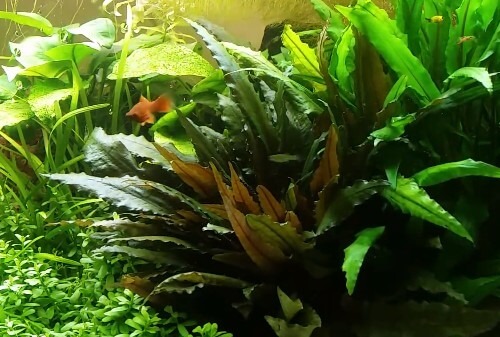 Cryptocoryne wendtii Brown #ad
Cryptocoryne wendtii Brown #ad
- Position: midground
- Care level: easy
- Growth: average
- Height: 4 – 12+ inches (10 – 30+ cm)
- Lighting: low
- CO2: low
Cryptocorynes, or “Crypts,” are prized for their diverse leaf shapes, textures, and colors, ranging from green to bronze and red. They adapt to various water conditions but may undergo “Crypt melt” when adjusting to new environments, where leaves temporarily dissolve before regrowing. These plants are ideal for midground or background placement, offering a vibrant, natural look with moderate care requirements.
Read more about this species: https://portlandaquarium.net/cryptocoryne/
Alternanthera reineckii
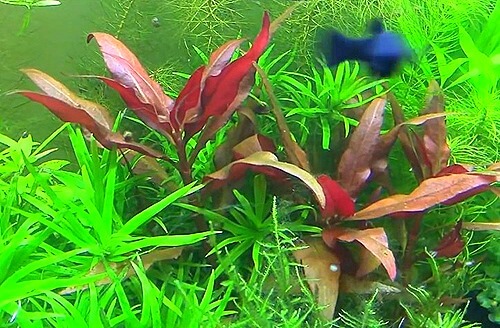
- Position: carpet, midground, background
- Care level: average
- Growth: average
- Height: 8 inches (20 cm)
- Lighting: average
- CO2: average
Alternanthera reineckii stands out with its vivid red to pink foliage, which intensifies under high lighting and nutrient-rich conditions. This stem plant requires regular trimming to maintain its bushy, upright form, making it a striking focal point in the background or midground. Its vibrant coloration contrasts beautifully with green plants, elevating the visual appeal of aquascapes.
Alternanthera reineckii ‘Mini’
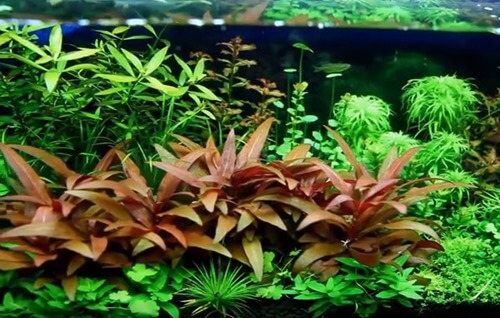 Alternanthera reineckii Mini #ad
Alternanthera reineckii Mini #ad
- Position: carpet, foreground, midground
- Care level: average
- Growth: average
- Height: 2 – 4+ inches (5 – 10+ cm)
- Lighting: average
- CO2: average
A compact version of A. reineckii, the ‘Mini’ variety is perfect for small aquariums or nano tanks. Its small, vibrant red leaves create a dense, carpet-like effect under bright light and CO2 supplementation. This plant is ideal for foreground or midground placement, offering a bold splash of color without overwhelming smaller setups.
Staurogyne repens
- Position: carpet, foreground, midground
- Care level: easy
- Growth: average
- Height: 1.2 – 4+ inches (3 – 10+ cm)
- Lighting: low
- CO2: low
Staurogyne repens is a low-growing plant with small, bright green leaves, making it an excellent choice for foreground carpeting. Its compact growth and ability to form dense mats under moderate to high light create a lush, lawn-like effect. Easy to propagate through cuttings, it’s a popular choice for aquascapers seeking a tidy, vibrant foreground.
Red dwarf Hygrophila – Hygrophila ‘Araguaia’
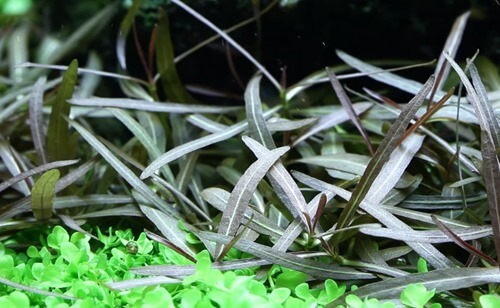
- Position: carpet, foreground
- Care level: average
- Growth: average
- Height: 4 – 8+ inches (10 – 20+ cm)
- Lighting: average
- CO2: average
Hygrophila ‘Araguaia’ is a striking plant with slender, reddish leaves and a sharp, pointed appearance. Its intense coloration requires high light and nutrient supplementation, making it a favorite for advanced aquarists. This plant adds a unique, almost spiky texture to midgrounds, creating a dramatic contrast with softer-leaved species.
Blyxa short leaf – Blyxa novoguineensis
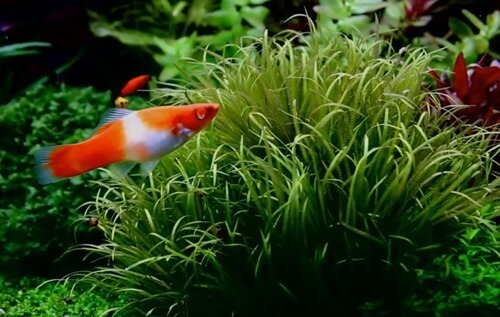
- Position: midground
- Care level: average
- Growth: average
- Height: 12+ inches (30+ cm)
- Lighting: average
- CO2: average
Blyxa novoguineensis, or short-leaf Blyxa, features grass-like, bushy growth with soft, green leaves. Its delicate, flowing appearance makes it a perfect midground accent. Thriving in moderate to high light, it creates a natural, meadow-like effect and is relatively easy to maintain, though it benefits from CO2 supplementation.
Chain Sword – Echinodorus quadricostatus
CC 3.0, Tommy Kronkvist
- Usages: high carpet, foreground, midground
- Care level: easy
- Growth: fast
- Height: 4 – 6+ inches (10 – 15+ cm)
- Lighting: low
- CO2: low
Chain Sword is a fast-growing plant with long, narrow leaves that form a dense carpet when conditions are optimal. It spreads via runners, making it ideal for foreground or midground coverage. This plant thrives in moderate light and nutrient-rich substrates, offering a vibrant green base for aquascapes.
Dwarf Cardinal plant – Lobelia cardinalis
- Position: midground, groundcover
- Care level: average
- Growth: average
- Height: 4 – 12+ inches (10 – 30+ cm)
- Lighting: average
- CO2: average
Lobelia cardinalis, or Dwarf Cardinal plant, features small, vibrant green leaves and a compact growth pattern. Perfect for midground or small tanks, it adds a tidy, structured look. It adapts well to various conditions but prefers moderate light and nutrient-rich substrates for optimal growth.
Downoi – Pogostemon helferi
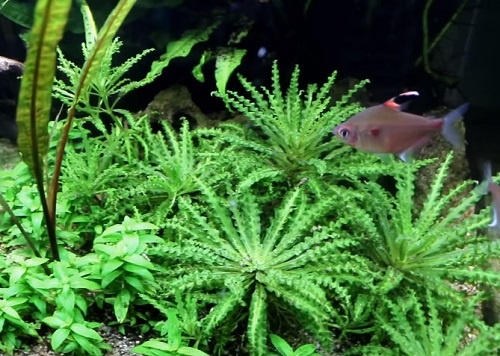 Downoi Tissue Culture Live Plant #ad
Downoi Tissue Culture Live Plant #ad
- Position: high carpet, foreground, midground
- Care level: average
- Type: stem
- Growth: average
- Height: 1.2 – 4+ inches (3 – 10+ cm)
- Lighting: average
- CO2: average
Pogostemon helferi, known as Downoi, is a unique foreground plant with curly, starburst-like leaves. Its compact, rosette growth creates a stunning visual effect, especially in high-light setups with CO2. Easy to propagate, Downoi is a favorite for aquascapers aiming for intricate, eye-catching foregrounds.
Lagenandra meeboldii
- Position: midground
- Care level: easy
- Appearance: rosette
- Growth: slow
- Height: 4 – 8+ inches (10 – 20+ cm)
- Lighting: low
- CO2: low
Lagenandra meeboldii resembles terrestrial plants with its broad, colorful leaves, ranging from green to reddish hues. Ideal for midground placement, it thrives in moderate light and adds a bold, structured look to aquariums. Its sturdy leaves make it resistant to fish nibbling, enhancing its longevity.
Orchid lily – Barclaya longifolia
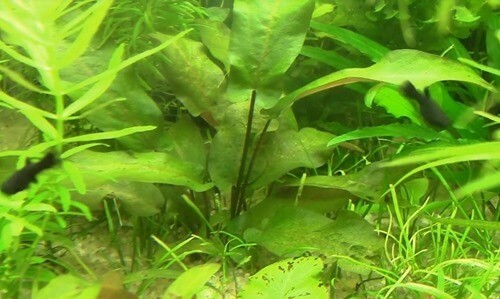
- Position: midground, background
- Care level: easy
- Growth: average
- Height: 10 – 15 inches (25 – 38 cm)
- Lighting: average
- CO2: low
Orchid lily, or Barclaya longifolia, features large, wavy leaves with a reddish underside, adding elegance to backgrounds. It requires moderate to high light and nutrient-rich substrates to thrive. Its striking appearance and unique leaf structure make it a standout choice for larger aquariums.
River Buttercup – Ranunculus inundatus
 River Buttercup
River Buttercup
- Position: foreground, midground
- Care level: average
- Type: none
- Growth: average
- Height: 2+ inches (5+ cm)
- Lighting: average
- CO2: average
Ranunculus inundatus, or River Buttercup, has distinctive umbrella-like leaves that form a lush, carpeting effect. Ideal for foregrounds or midgrounds, it thrives in moderate to high light and CO2-rich environments. Its unique leaf shape adds a whimsical, natural charm to aquascapes.
Pearlweed – Hemianthus micranthemoides
- Synonym: Micranthemum micranthemoides
- Common names: pearlweed, pearl grass, baby tears
- Position: high carpet, foreground, midground
- Care level: advanced
- Growth: average
- Height: 2 – 6+ inches (5 – 15+ cm)
- Lighting: average
- CO2: average
Pearlweed features tiny, bright green leaves that form dense, bushy growth, perfect for backgrounds or midgrounds. It thrives in moderate to high light and spreads quickly, creating a lush, textured look. Easy to trim and propagate, it’s a versatile choice for aquascapers.
Basil Leaf – Limnophila rugosa
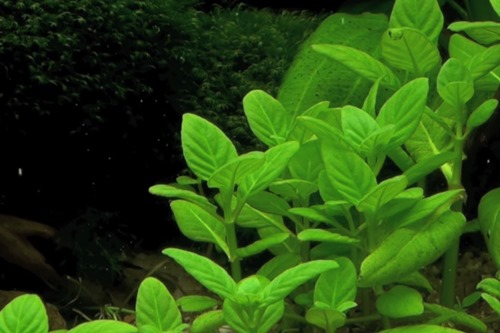
- Position: foreground, midground
- Care level: average
- Growth: average
- Height: 4 – 8 inches (10 – 20 cm)
- Lighting: average
- CO2: average
Limnophila rugosa, or Basil Leaf, is notable for its textured, aromatic leaves that release a basil-like scent when crushed. Its bushy growth and vibrant green color make it ideal for backgrounds. It thrives in moderate light and adds a unique sensory element to aquariums.
Rotala indica ‘Bonsai’

- Synonym: Ammania ‘Bonsai’, Rotala ‘Bonsai’
- Position: midground, background, nano tank
- Care level: average
- Growth: slow
- Height: 2 – 8+ inches (5 – 20+ cm)
- Lighting: average
- CO2: average
Rotala indica ‘Bonsai’ is a compact stem plant with small, round leaves, resembling miniature trees when trimmed. It requires high light and CO2 for vibrant growth, making it ideal for midground or background aquascapes. Its delicate structure adds a refined, artistic touch.
Water Hyssop – Bacopa caroliniana
- Care level: easy
- Growth: slow
- Height: 4 – 12+ inches (10 – 30+ cm)
- Lighting: low
- CO2: low
Water Hyssop, or Bacopa caroliniana, features thick, succulent leaves with a minty scent. Its upright growth makes it suitable for backgrounds, and it adapts to a wide range of conditions. Moderate light enhances its lush, green appearance, adding a robust look to tanks.
Creeping Jenny – Lysimachia nummularia
- Position: midground
- Care level: easy
- Growth: average
- Height: 4 – 8 inches (10 – 20 cm)
- Lighting: average
- CO2: low
Creeping Jenny features round, bright green leaves that trail elegantly, adapting to both submerged and emersed growth. Ideal for backgrounds or cascading effects, it thrives in moderate light. Its versatility and vibrant color make it a popular choice for dynamic aquascapes.
Large Pearl grass – Micranthemum umbrosum
- Position: foreground, midground
- Care level: average
- Growth: fast
- Height: 4 – 6+ inches (10 – 15+ cm)
- Lighting: average
- CO2: average
Large Pearl grass forms dense carpets with tiny, round leaves, perfect for foregrounds. It thrives in moderate to high light and CO2, creating a lush, green base. Its fast growth and easy propagation make it a staple for aquascapers seeking a classic carpet effect.
Tonina fluviatilis
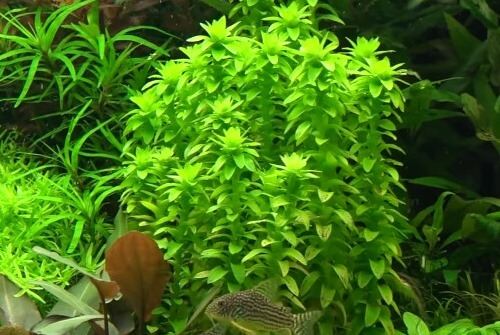
- Position: midground
- Care level: advanced
- Growth: average
- Height: 8 – 12 inches (20 – 30 cm)
- Lighting: high
- CO2: average
Tonina fluviatilis features delicate, needle-like leaves with a vibrant green color. It requires high light and CO2 to thrive, making it a challenging but rewarding choice for advanced aquarists. Its fine texture adds a delicate, airy look to midgrounds or backgrounds.
Tonina ‘Belem’
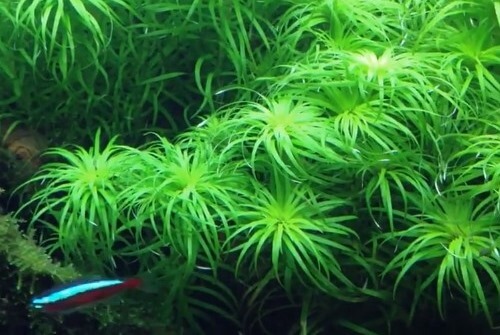
- Position: midground, background
- Care level: advanced
- Growth: average
- Height: 4 – 8 inches (10 – 20 cm)
- Lighting: high
- CO2: average
Tonina ‘Belem’ is a compact version of T. fluviatilis, with finer, denser leaves. It demands high light and CO2 for optimal growth, creating a delicate, textured appearance. Ideal for midgrounds, it adds a refined, intricate element to aquascapes.
Gratiola viscidula
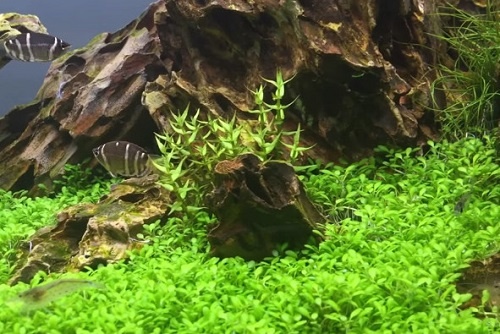
- Position: foreground, midground
- Care level: average
- Growth: slow
- Height: 1.2 – 4+ inches (3 – 10+ cm)
- Lighting: average
- CO2: average
Gratiola viscidula is a creeping plant with small, lance-shaped leaves, perfect for detailed foreground carpets. It thrives in moderate to high light and spreads via runners, creating a tidy, lush effect. Its compact growth makes it ideal for small or nano tanks.
Didiplis diandra
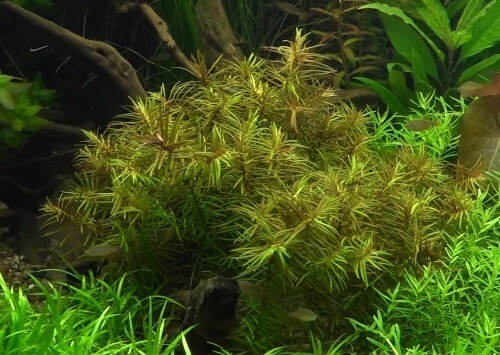
- Position: midground
- Care level: average
- Growth: fast
- Height: 4 – 6+ inches (10 – 15+ cm)
- Lighting: average
- CO2: low
Didiplis diandra features fine, reddish leaves that form a feathery, vibrant look under high light and CO2. Ideal for midgrounds or backgrounds, it adds a delicate, colorful texture. Regular trimming maintains its bushy form, enhancing aquascape depth.
Proserpinaca palustris
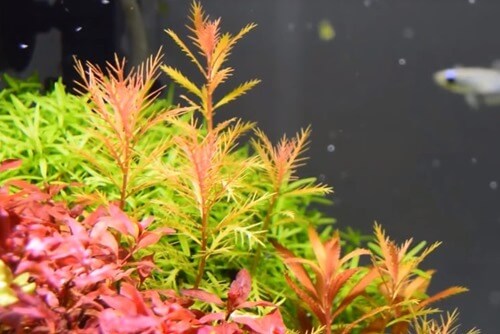 Proserpinaca palustris
Proserpinaca palustris
- Position: midground, background
- Care level: average
- Growth: average
- Height: 4 – 12+ inches (10 – 30+ cm)
- Lighting: average
- CO2: average
Proserpinaca palustris, or Mermaid Weed, has serrated leaves that shift from green to red under high light. Its unique texture and color-changing ability make it a dynamic midground plant. It requires nutrient-rich conditions and CO2 for optimal vibrancy.
Water Violet – Hottonia palustris
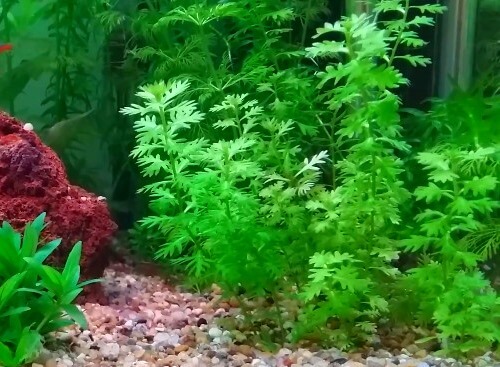
- Position: midground
- Care level: easy
- Type: stem
- Growth: average
- Height: 4 – 8+ inches (10 – 20+ cm)
- Lighting: low
- CO2: low
Water Violet features feathery, bright green foliage, creating an airy, delicate background. It thrives in moderate light and cooler water, adding a soft, flowing texture to aquariums. Its lush appearance makes it a favorite for natural-looking setups.
Nesaea pedicellata
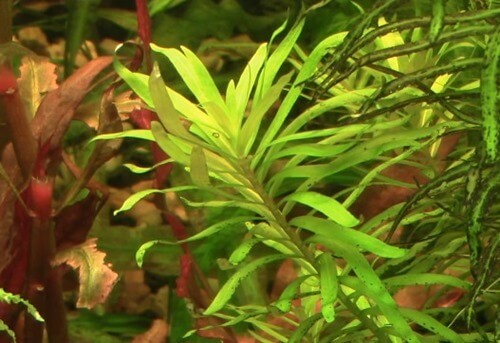
- Position: midground
- Care level: average
- Growth: average
- Height: 8 – 12+ inches (20 – 30+ cm)
- Lighting: average
- CO2: average
Nesaea pedicellata boasts bright red to orange stems and leaves, creating a bold focal point in high-light setups. Ideal for backgrounds, it requires nutrient-rich substrates and CO2 to maintain its vibrant color. Its striking appearance elevates any aquascape.
Nesaea crassicaulis
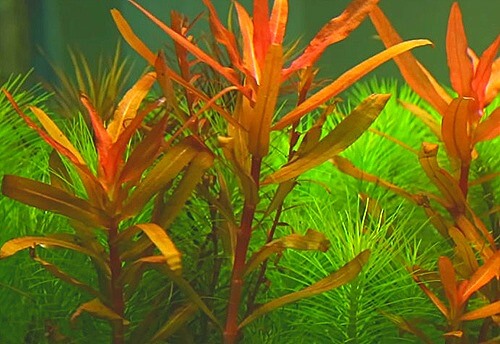
- Position: midground
- Care level: average
- Growth: average
- Height: 8 – 12+ inches (20 – 30+ cm)
- Lighting: average
- CO2: average
Nesaea crassicaulis is a robust plant with reddish leaves and a commanding presence. Perfect for backgrounds, it thrives in high light and nutrient-rich conditions. Its bold, upright growth adds drama and structure, making it a standout in large aquariums.

 Java Fern #ad
Java Fern #ad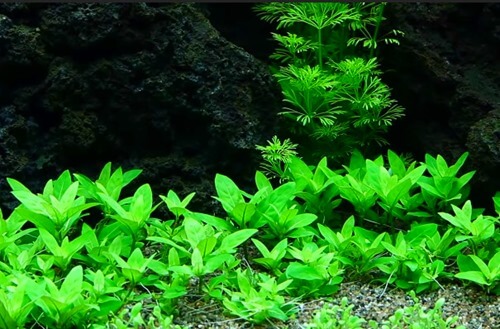 Staurogyne repens #ad
Staurogyne repens #ad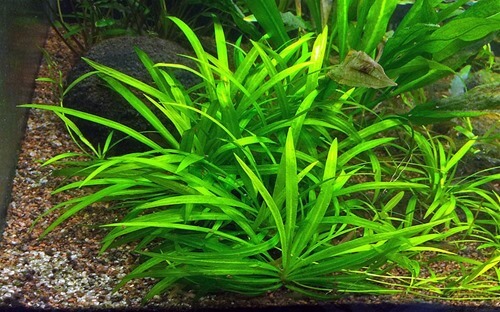 Chain Sword #ad
Chain Sword #ad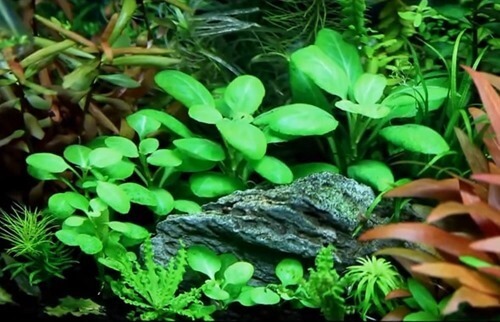 Dwarf Cardinal plant #ad
Dwarf Cardinal plant #ad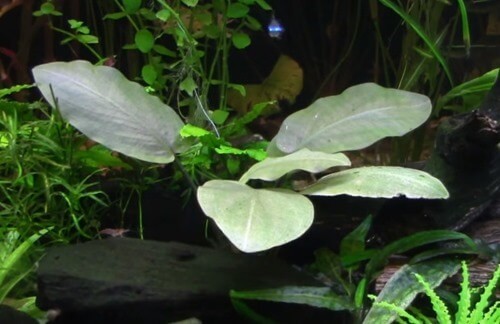 Lagenandra meeboldii #ad
Lagenandra meeboldii #ad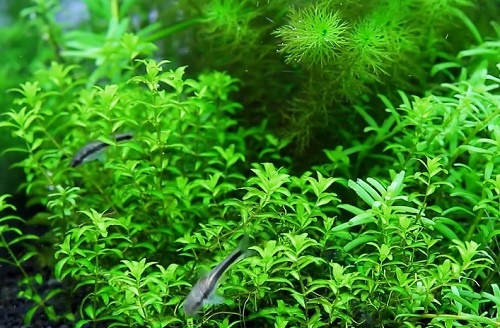 Pearlweed #ad
Pearlweed #ad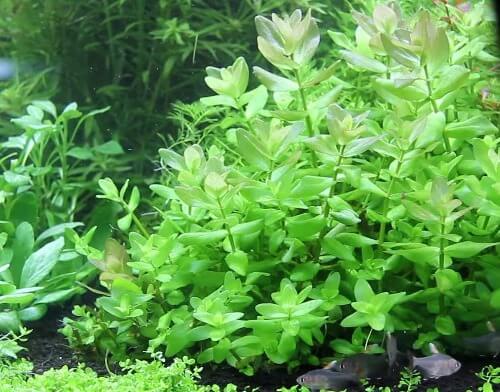 Bacopa caroliniana #ad
Bacopa caroliniana #ad Lysimachia nummularia #ad
Lysimachia nummularia #ad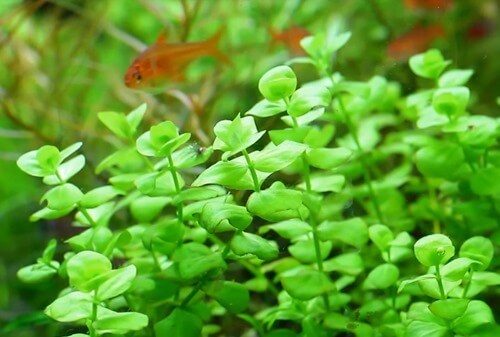 Micranthemum umbrosum #ad
Micranthemum umbrosum #ad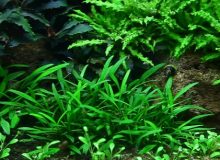
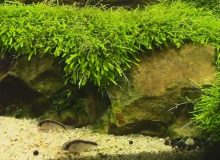
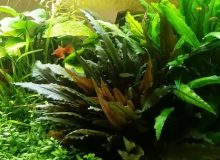
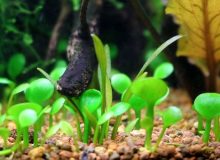
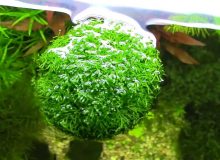
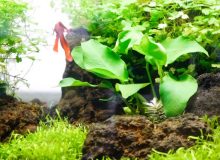
I appreciate your very helpful information.
Thanks